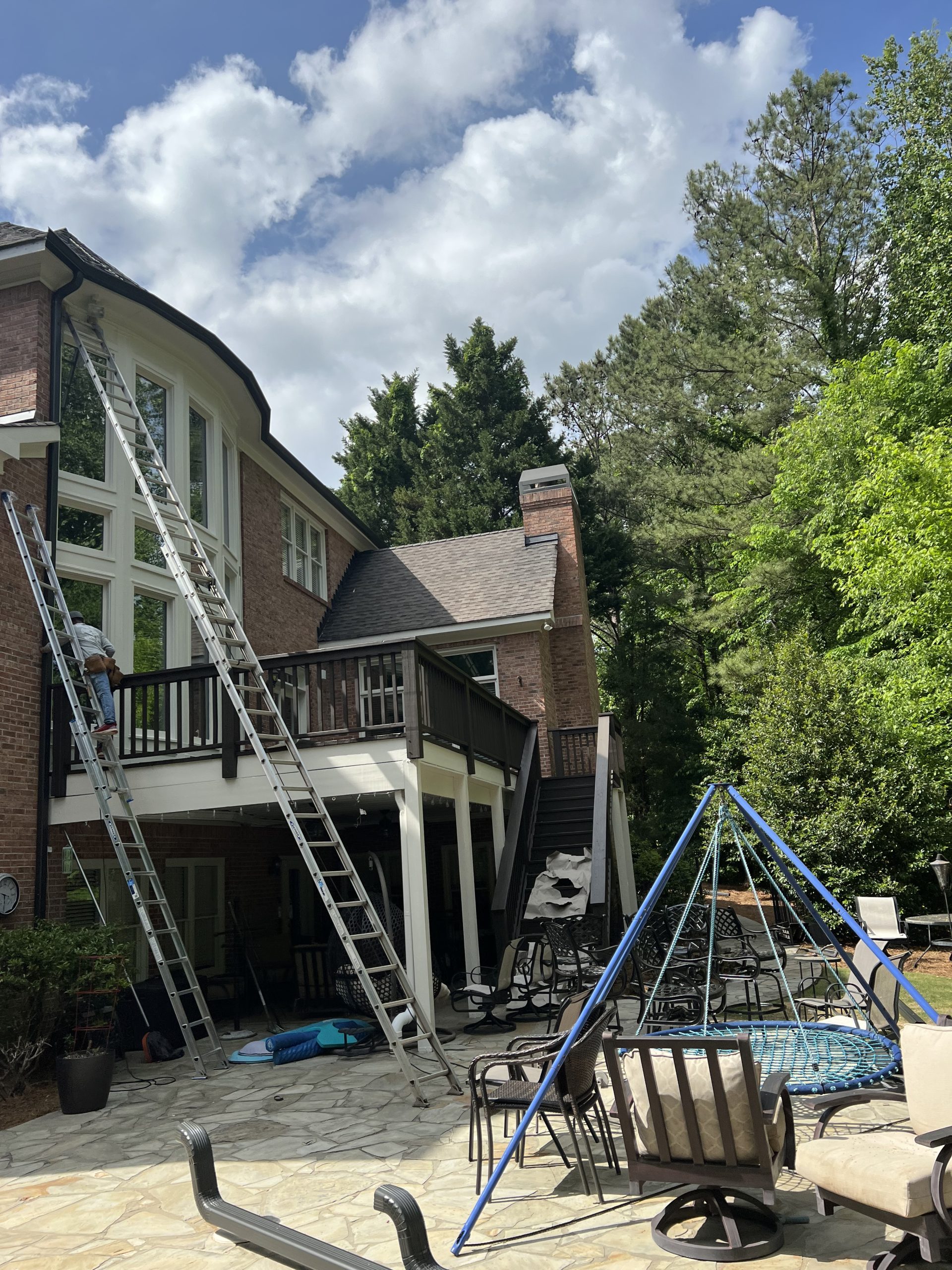Gutter replacement is a process that involves removing the existing gutter system and replacing it with a new one. This is often necessary when gutters are badly damaged, rusted, warped, or have simply reached the end of their useful life. A new gutter system ensures proper drainage of rainwater, protecting the structure of the home, foundation, and landscaping.
Steps for Gutter Replacement:
1. Assessment and planning:
- Inspect the current condition of the gutters and determine if they need to be completely replaced.
- Measure the length of the roof to estimate the amount of material needed.
- Choose the type of gutters (e.g. aluminum, vinyl, galvanized steel, or copper) and style (K-section, half-round, etc.).
2. Removing the old gutters:
- Remove the existing gutters, starting with the screws or clips holding them in place.
- Carefully remove the gutter sections and downspouts, taking care not to damage the roof or walls.
- Clean the area to prepare for the installation of the new system.
3. Installing the brackets:
- Place new brackets or hooks along the edge of the roof, making sure they are properly spaced (usually every 2-3 feet).
- Make sure the brackets are aligned and at the proper pitch (about 1 inch every 10 feet) to allow water flow to the downspouts.
4. Cutting and fitting the new gutters:
- Cut the new gutter sections to the required measurements.
- Place the sections into the brackets, making sure they fit snugly and are aligned.
- Connect the sections using connectors or water-resistant sealant.
5. Installing the downspouts:
- Place the downspouts at corners or designated points to direct water away from the house.
- Make sure the downspouts are properly connected to the gutters and that water flows without obstructions.
6. Sealing and Testing:
- Apply sealant to the joints and connections to prevent leaks.
- Check that the system is properly installed and that water flows properly to the downspouts.
Common Gutter Materials:
- Aluminum: Lightweight, corrosion-resistant, and inexpensive.
- Vinyl: Easy to install and inexpensive, but less resistant to extreme temperatures.
- Galvanized Steel: Durable, but can rust over time.
- Copper: Very durable and aesthetically pleasing, but more expensive.
Tools Needed:
- Safe and stable ladder.
- Drill and screws.
- Gutter cutting saw.
- Water-resistant sealant.
- Level to ensure proper pitch.
- Protective gloves and glasses.
When to Replace Gutters:
- When they have cracks, holes, or widespread rust.
- If they are warped or separated from the roof.
- If water is not draining properly and causing damage to the house.-
- If frequent repairs are no longer cost effective.
Advantages of Replacing Gutters:
- Improves rainwater drainage.
- Protects the structure of the house and foundation.
- Increases the value and aesthetics of the property.
- Reduces long-term maintenance.
If you are not comfortable doing this work or if your roof is very high, it is advisable to hire a professional to ensure a safe and effective installation.
